
Ongoing Blog…
Boston MSA Dinner – on Saturday, Feb 2 at the Burlington, MA Marriot, the Miramichi Salmon Association MSA will hold its most important USA event of the year. Without a doubt the MSA is the feet-on-the-ground organization that is working to help the Miramichi and its salmon in a variety of important and practical ways. This dinner is a major source of funds for the MSA, and it is an annual meeting of old and new salmon fishing friends. I wouldn’t miss it for anything. In addition to the dinner, but optional and at no extra charge, there are a series of short seminars held in the afternoon. Of special interest this year are some timely discussions about several environmental and fishery management issues that are vital to the health of the Miramichi.
The auction always features some great original art work, hand-tied salmon flies, and a good variety of items of special interest to salmon fishers. Also, there are a number of salmon fishing trips for all budgets. Several regular guests of the famous Black Brook Salmon Club began their relationship with the Club by purchasing a trip at this dinner.
Campell’s and Keenan’s Pools has also donated three days of fishing for up to four anglers over Labor Day weekend. This includes the main camp and a separate cabin with total sleeping accommodations for up to three couples – you must do your own cooking at Campbell’s. Also included are two guides – Jason Curtis and Darrell Warren – equipped with Sharpe canoes. The fishing water includes the Brophy Pool on Cains River, Campbell’s and Keenan’s, and Doctor’s Island on the Southwest Miramichi. If you have any questions or want more info about the C&K trip just send me an e-mail at bigbass@maine.rr.com.
In addition to these trips Upper Oxbow Adventures over on the NW Miramichi and Ted Williams White Birch Lodge have also both donated excellent trips. Here is a link to the MSA website with all the dinner info. and how to make reservations. Make the commitment to attend right now. I know that you will enjoy it.
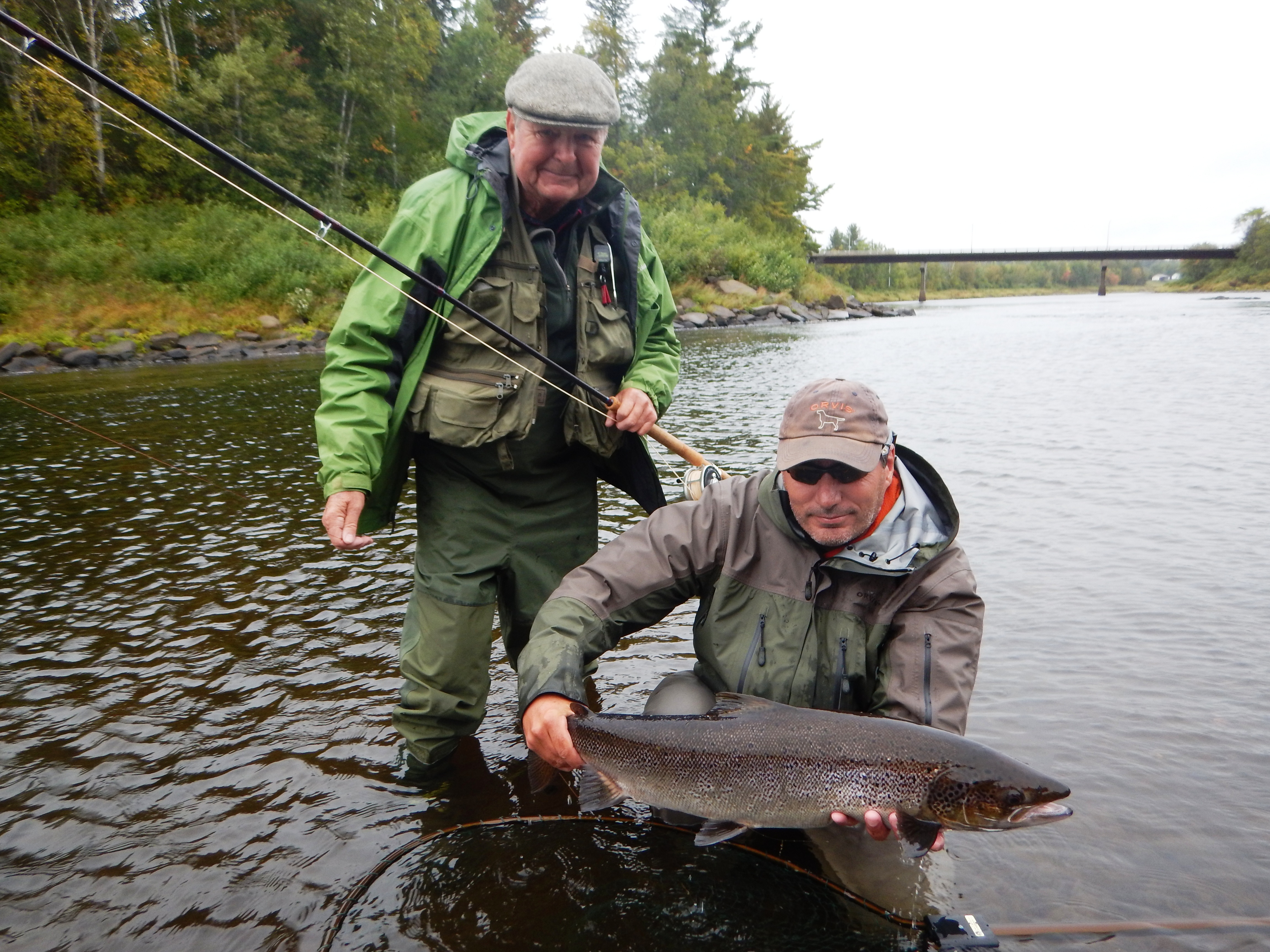
Jerry Robinson and guide Jason Curtis with a fresh, autumn hen salmon from Doctor’s Island, Campbell’s and Keenan’s Camp.
December 30 – For the first time in my 40 plus years of living in Falmouth, Maine I’ve got a Carolina Wren trying to overwinter here. I see this solitary bird at the feeder a couple of times each day. According to Peterson’s the species does not migrate and comes only as far north as southern New England. We do get what I always assumed were House Wrens nesting here in the summer, though maybe they too are Carolina Wrens and I just never looked closely enough. But there is no mistaking the beautiful and vivid markings of this bird. I love the little tail flips and industrious movements around the feeder. Hope this one does okay. According to Peterson’s the species is always trying to winter further north, but many are lost every time there is a stretch of extreme weather.
December 29 – Cains ice out and beaver pelts – Marc Poirier had his track driven ATV in to his camp on the Cains River in Shinnickburn after the big rain of 12/21, and found that the Cains too had completely iced out.  Just look at the thickness of the slabs that got pushed up onto the edge of the roadway – unreal. The river froze up almost immediately again down in the Blackville area, but it was still running full of sludge up in Boiestown. Tonight’s forecast cold should freeze everything up solid as a rock again.
Just look at the thickness of the slabs that got pushed up onto the edge of the roadway – unreal. The river froze up almost immediately again down in the Blackville area, but it was still running full of sludge up in Boiestown. Tonight’s forecast cold should freeze everything up solid as a rock again.
I got a great e-mail from Darrell Warren who is an accomplished trapper. This fall he removed the beavers who had built this dam at the end of our culvert where Mahoney Brook goes under our road in to camp. 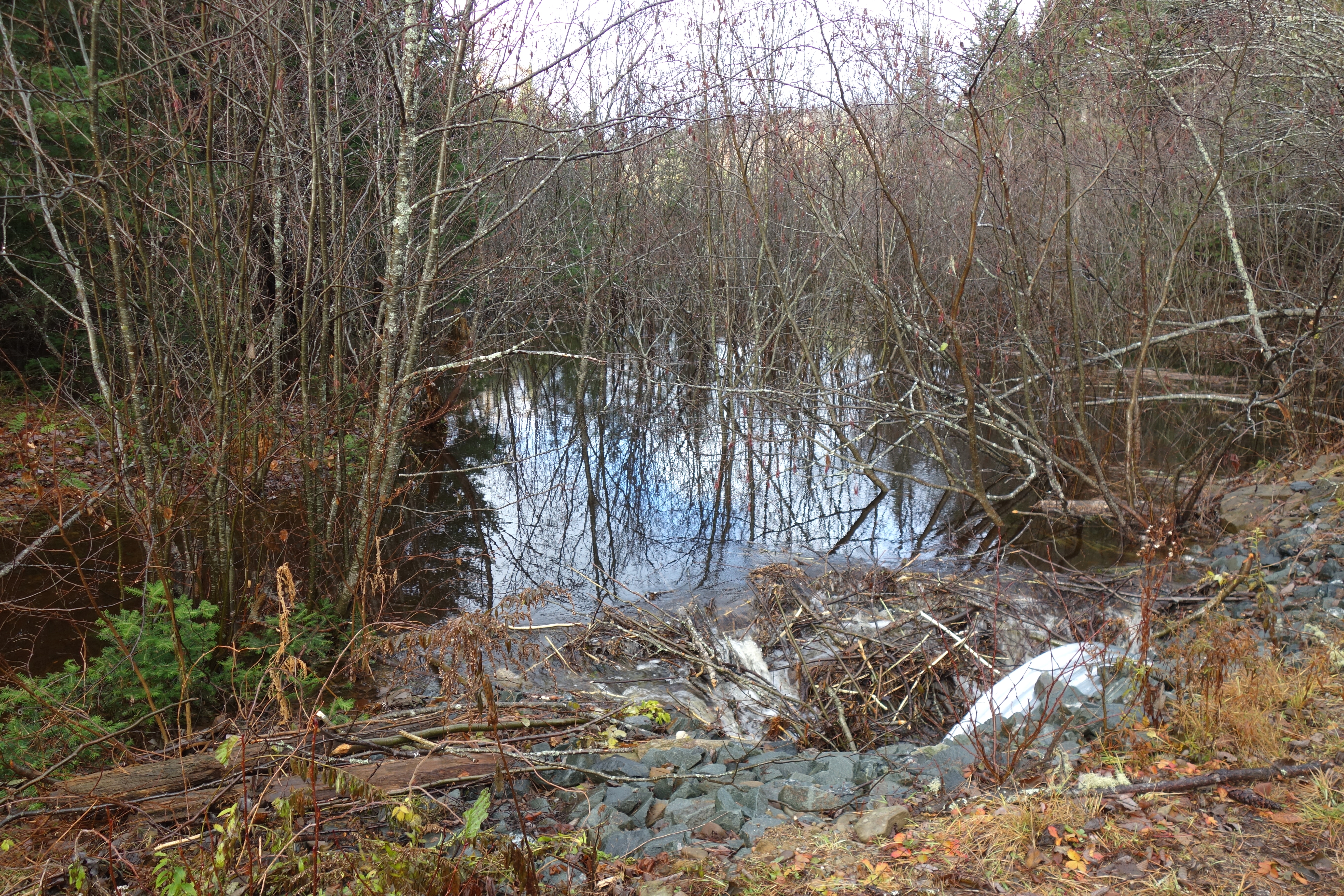
Darrell mounted one of beaver pelts in the old Indian fashion by tying it inside a hoop made of spruce bows. We’ll add a few turkey feathers and it will look great hanging up in the camp at Mahoney Brook. 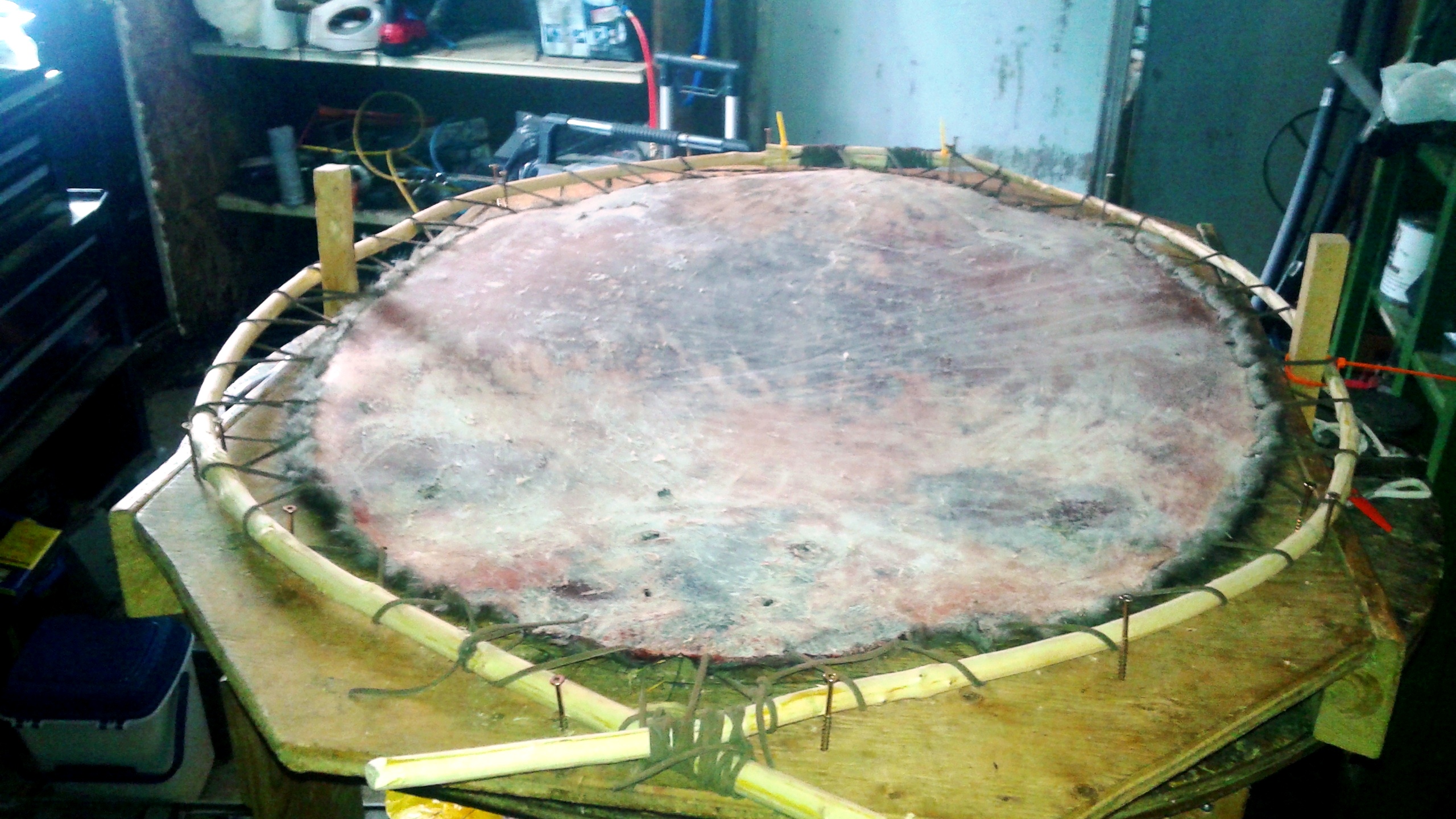
December 27 – Turkeys, Red Squirrels, antler sheds, frozen again – for most of rural New England’s residents seeing wild turkeys is no big deal. I guess because the Maine grew up in 50 years ago had none, I am still fascinated at having them nearby.  By the same token gray squirrels were rare, and as a teenage hunter it was a big deal to get one. Red squirrels were everywhere, and at least here next to Portland, Maine the situation has totally flip-flopped. I will go a couple of years without seeing a red squirrel in my back yard, and then have a year where there are a few, but never in nearly the quantities of the grays. This year, though, was an exception. For whatever reason – I’m told it was the big nut year we had in 2017 – we have a good number of red squirrels around and I just love seeing them. I think they are simply beautiful, and I love their quick moves and spunky personalities. I snapped this picture out of the kitchen window today, and you can just make out the little red squirrel under the feeder that is holding its own amongst a group of very large tom turkeys. The reds will come out and simply run through the feet of the an assembled group of turkeys creating complete chaos, and the squirrel’s opportunity at the seeds.
By the same token gray squirrels were rare, and as a teenage hunter it was a big deal to get one. Red squirrels were everywhere, and at least here next to Portland, Maine the situation has totally flip-flopped. I will go a couple of years without seeing a red squirrel in my back yard, and then have a year where there are a few, but never in nearly the quantities of the grays. This year, though, was an exception. For whatever reason – I’m told it was the big nut year we had in 2017 – we have a good number of red squirrels around and I just love seeing them. I think they are simply beautiful, and I love their quick moves and spunky personalities. I snapped this picture out of the kitchen window today, and you can just make out the little red squirrel under the feeder that is holding its own amongst a group of very large tom turkeys. The reds will come out and simply run through the feet of the an assembled group of turkeys creating complete chaos, and the squirrel’s opportunity at the seeds.
Jason Curtis proudly sent me this next picture of a pair of matched sheds that fell just as pictured not far from his house. He is also monitoring a much larger buck that still has both horns. 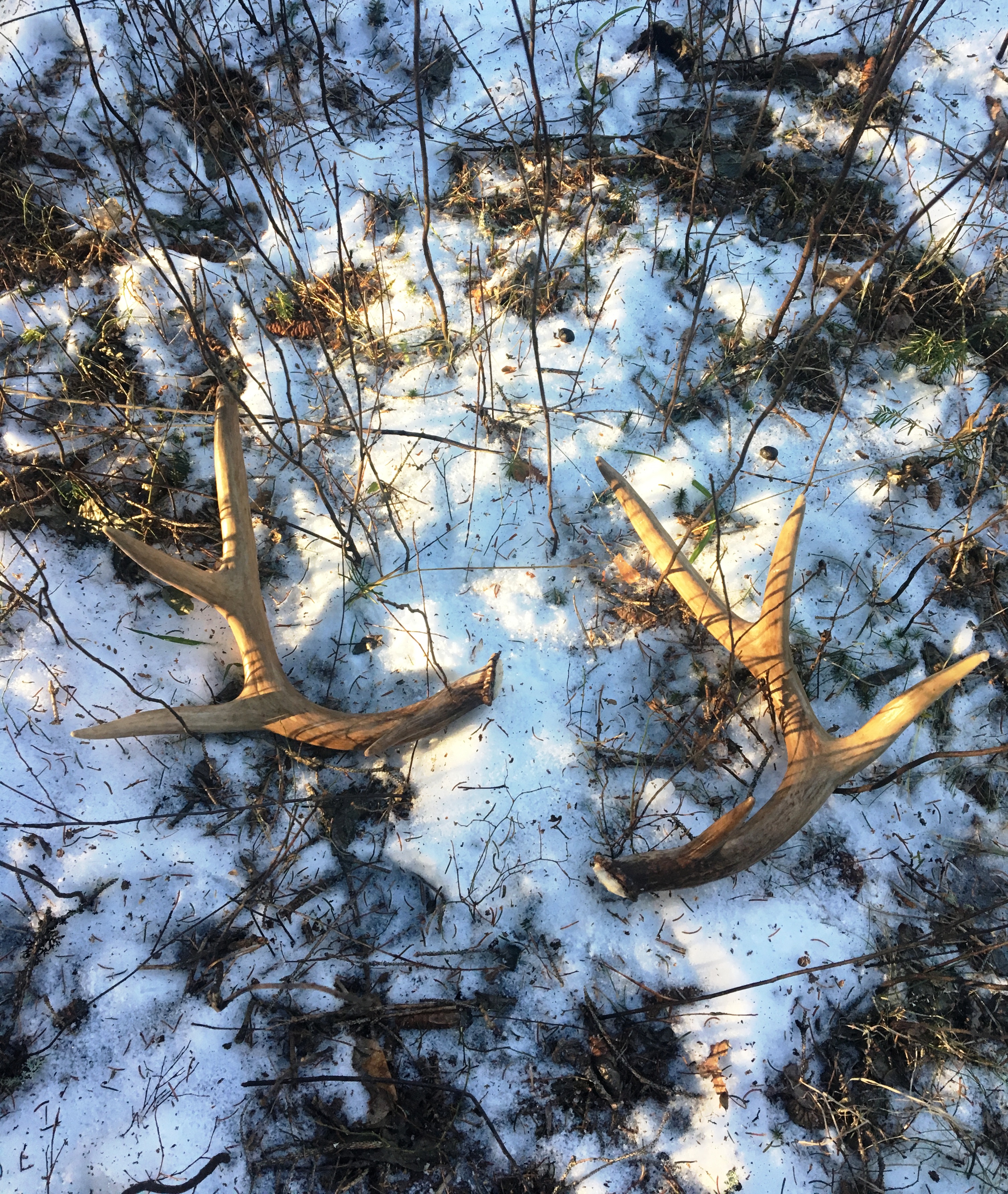
I hear from Jason and Byron Coughlin of Country Haven that the Miramichi down in Blackville is frozen solid again, though I see from the camera at Bullock’s in Boiestown that the river is full of ice but still running there.
December 26 – Napetipi Salmon News I got a newsletter from the Napetipi Outfitting Lodge on the North Shore of Saint Lawrence. The letter talked about the Napetipi’s fishery in 2018 holding up quite well in spite of a generally poor season for the region. I fished this river a few years back and thoroughly enjoyed the trip.  I drove all the way through Newfoundland and took a ferry across the Straits of Belle Isle. We then flew in to the camp. It was a great experience. Apparently the water was very cold along the North Shore early this summer, and the fish were late in arriving. The lodge report did state that the capelin run this summer was the best that anyone had seen in 50 years, and that for the first time in a very, very long time salmon were seen in the ocean feeding on the capelin. That to me sounds like very good news since I personally believe that a lot of our salmon problems are coming from overharvesting the salmon’s forage base. Maybe that will be helpful to our Miramichi run next summer.
I drove all the way through Newfoundland and took a ferry across the Straits of Belle Isle. We then flew in to the camp. It was a great experience. Apparently the water was very cold along the North Shore early this summer, and the fish were late in arriving. The lodge report did state that the capelin run this summer was the best that anyone had seen in 50 years, and that for the first time in a very, very long time salmon were seen in the ocean feeding on the capelin. That to me sounds like very good news since I personally believe that a lot of our salmon problems are coming from overharvesting the salmon’s forage base. Maybe that will be helpful to our Miramichi run next summer.
December 21 Rain – on the 21st of December a large event of rain and warm temperatures moved up through the eastern half of the USA and into Canada. The Miramichi valley got about 50mm, and the rain combined with warm temperatures melted about half of the significant snow pack that existed. The next day temperatures returned to slightly below normal levels of cold. These two pictures from Jason Curtis show that on Dec 22 the water was running so hard out of MacKenzie Brook that it flooded over the top of the river ice. Jason has been watching this brook for almost 40 years, and it is a very rare occurrence. 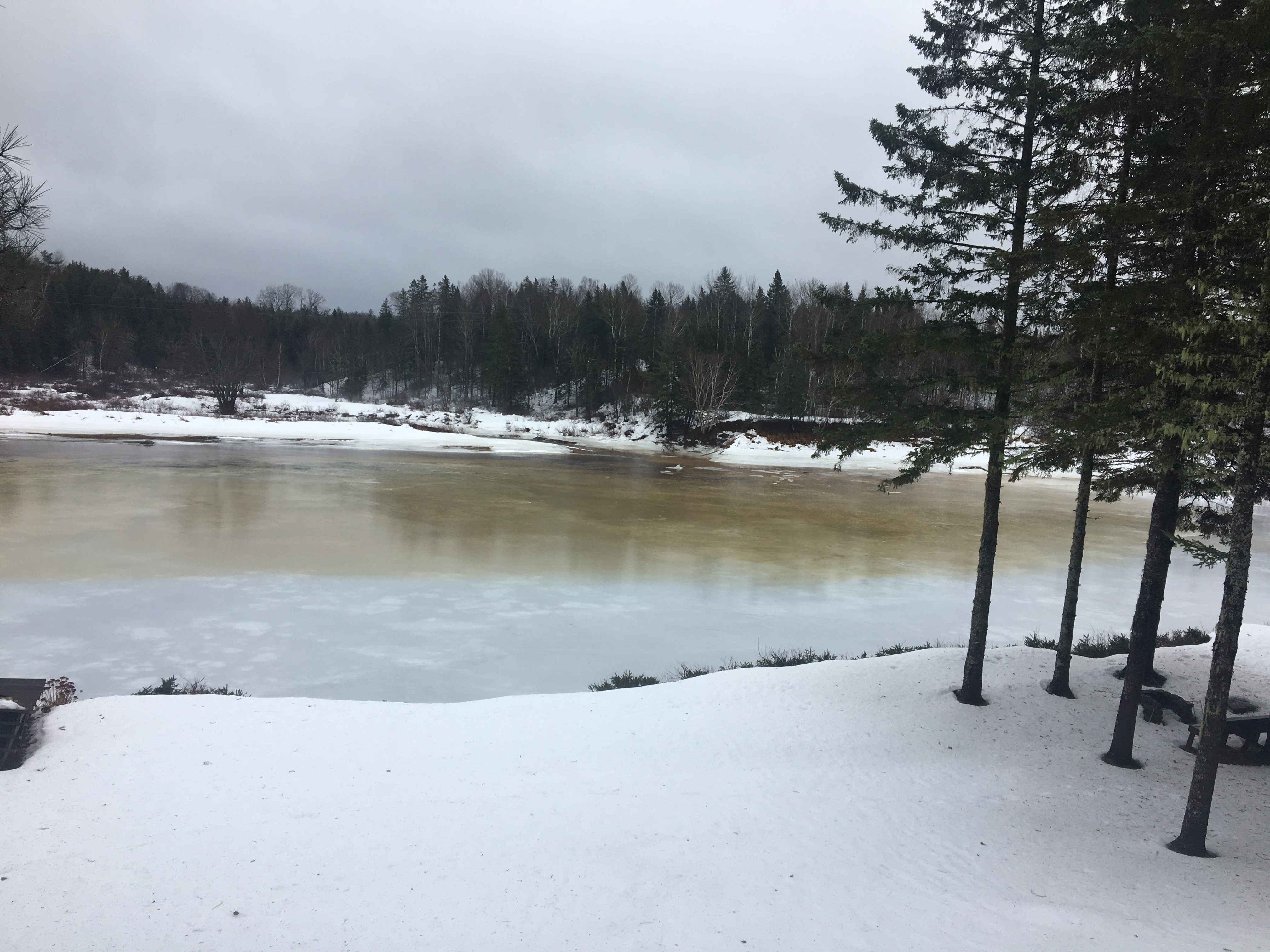
The next day when Jason woke up the river had risen up about a meter and a half and the ice was broken up and running out of the river. 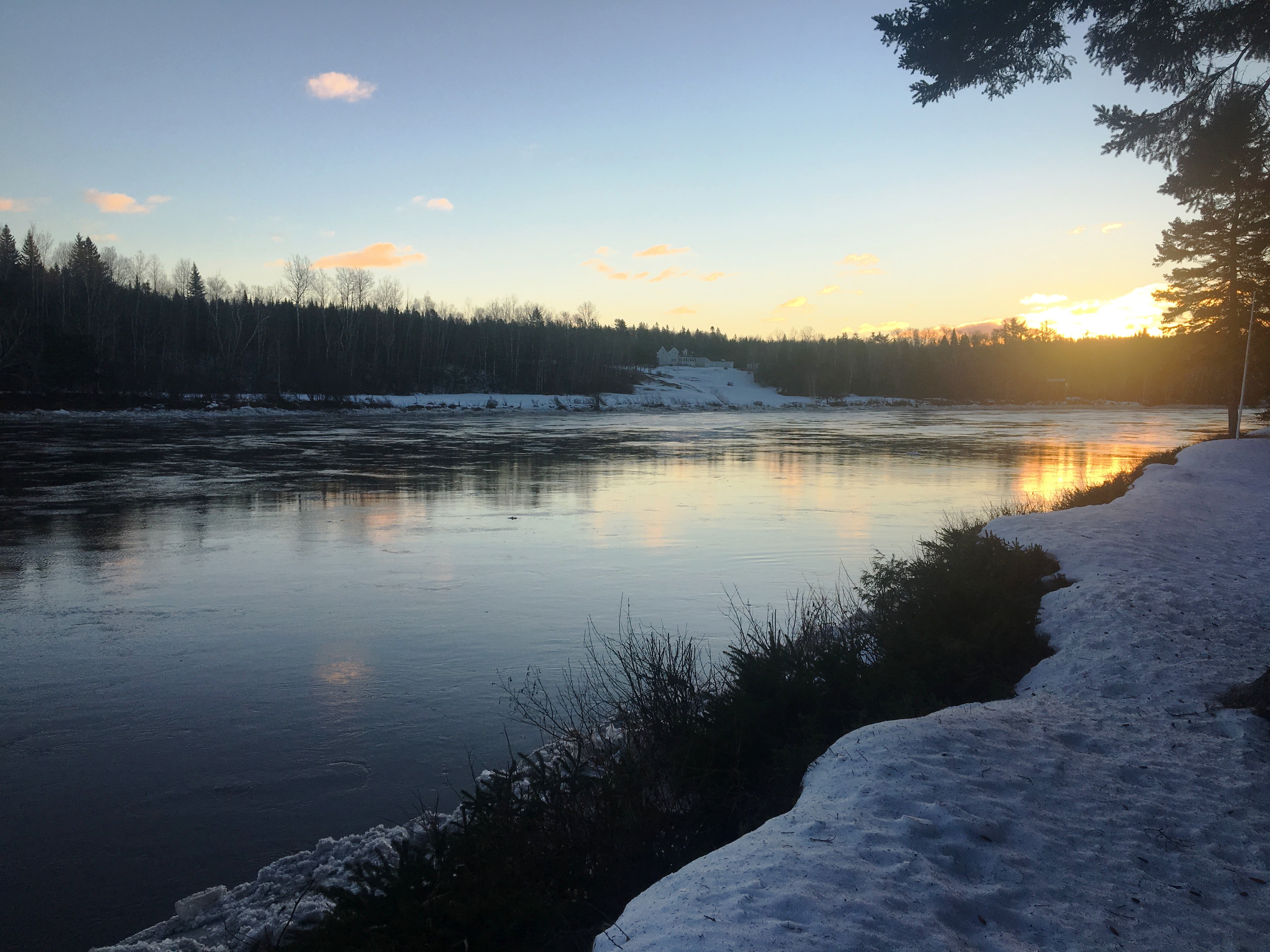 This development surprised everyone as the river had frozen on the high side and it has been quite cold. The ice was very thick for so early in the season, but it is still just December. I heard that the ice was still holding far down river in Quarryville, though I have not substantiated that information. I just looked at the MSA webcam at Bullocks, and the river is flowing, but it is filled with ice. There are three more very cold days coming up with near zero temps, and even though high it is likely the river will freeze over. It is supposed to be warm again on Friday, though only briefly, and not as warm. It is hard to say what will happen. Luckily, at least, from the reports I have gotten no real damage was done by this event. The meter hit a maximum height of about 6 meters in Blackville, and that is not enough to push over the banks except in a few low lying areas.
This development surprised everyone as the river had frozen on the high side and it has been quite cold. The ice was very thick for so early in the season, but it is still just December. I heard that the ice was still holding far down river in Quarryville, though I have not substantiated that information. I just looked at the MSA webcam at Bullocks, and the river is flowing, but it is filled with ice. There are three more very cold days coming up with near zero temps, and even though high it is likely the river will freeze over. It is supposed to be warm again on Friday, though only briefly, and not as warm. It is hard to say what will happen. Luckily, at least, from the reports I have gotten no real damage was done by this event. The meter hit a maximum height of about 6 meters in Blackville, and that is not enough to push over the banks except in a few low lying areas.
Cold Snap – some of the biggest news this fall is the early snow and cold snap that we are going through. Actually, here on the coast temperatures are more or less back to normal for a while, and we are getting rain. For the interior of Maine, though, and up in New Brunswick it is still snow, and it doesn’t look like it will be going away any time soon. This has had lots of effect on our own planned outdoor activities, and it has also been tough on wildlife. Here are a few photos that tell some of the story. 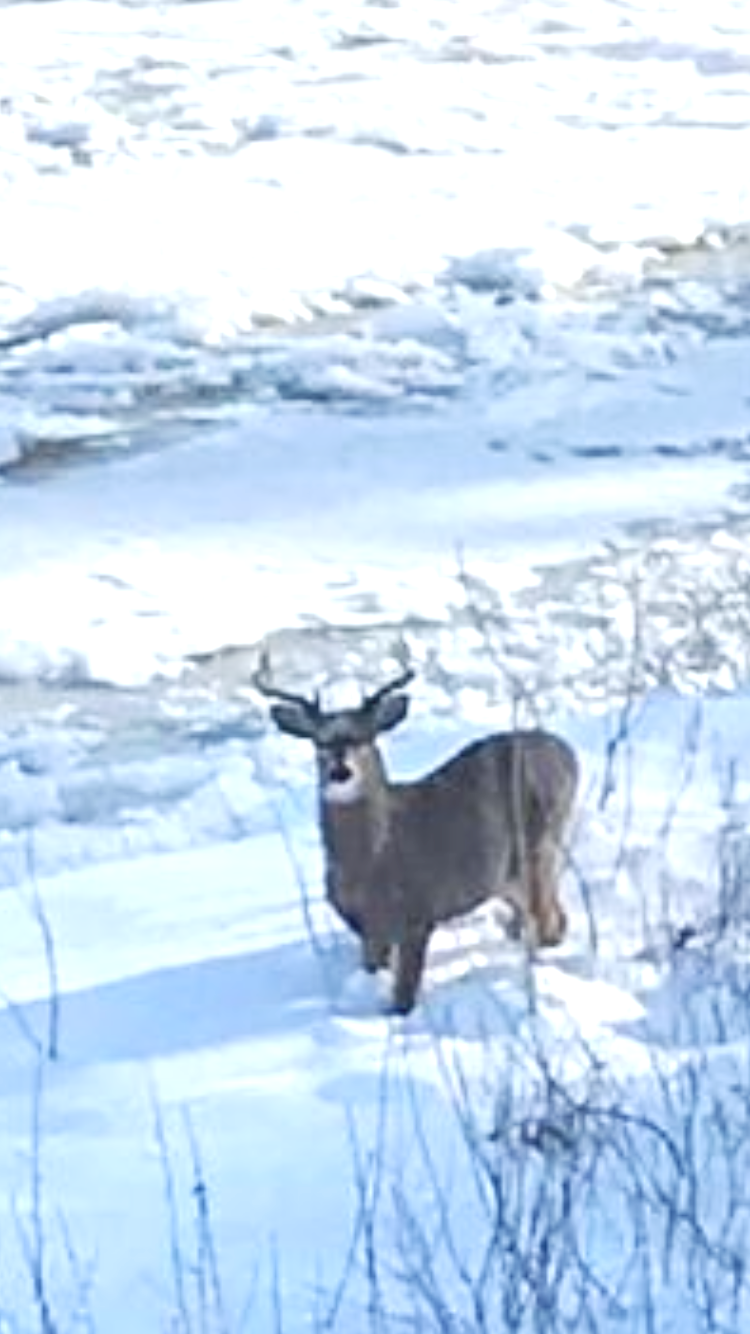
Glen Keenan lives across the river from me and sent Jason Curtis this photo of a nice buck standing on the shore at the head of Keenan Pool, or at least where the head of the pool would be if it wasn’t all frozen sold.
Here in Falmouth, Maine I began putting out a little grain for the deer almost a month ahead of schedule. They were on it instantly. In this photo the deer were at my feeder at 3:00 PM on a recent day that broke what a local meteorologist calls “the mini-max.” This is the lowest high temperature recorded for the day. I think it was around 14F. Incredible!
We have 9 male wild turkeys who have decided that my backyard is their territory. They spent the summer in the clover patch that I planted where my garden used to be – so I could do more salmon fishing this past season – then in the same patch covered with winter rye after Labor Day, and now that it is snowed over they just hang out between deer feeders, bird feeders, and the nearby woods. They used to roost in the big oaks a little distance up the river. They have now taken up a handier residence, though, and in this picture you can see a number of them in a big oak tree overhanging the back yard. One by one they fly up there between 3:30 and 3:45 in the afternoon, and they drop down in the morning shortly after daybreak. 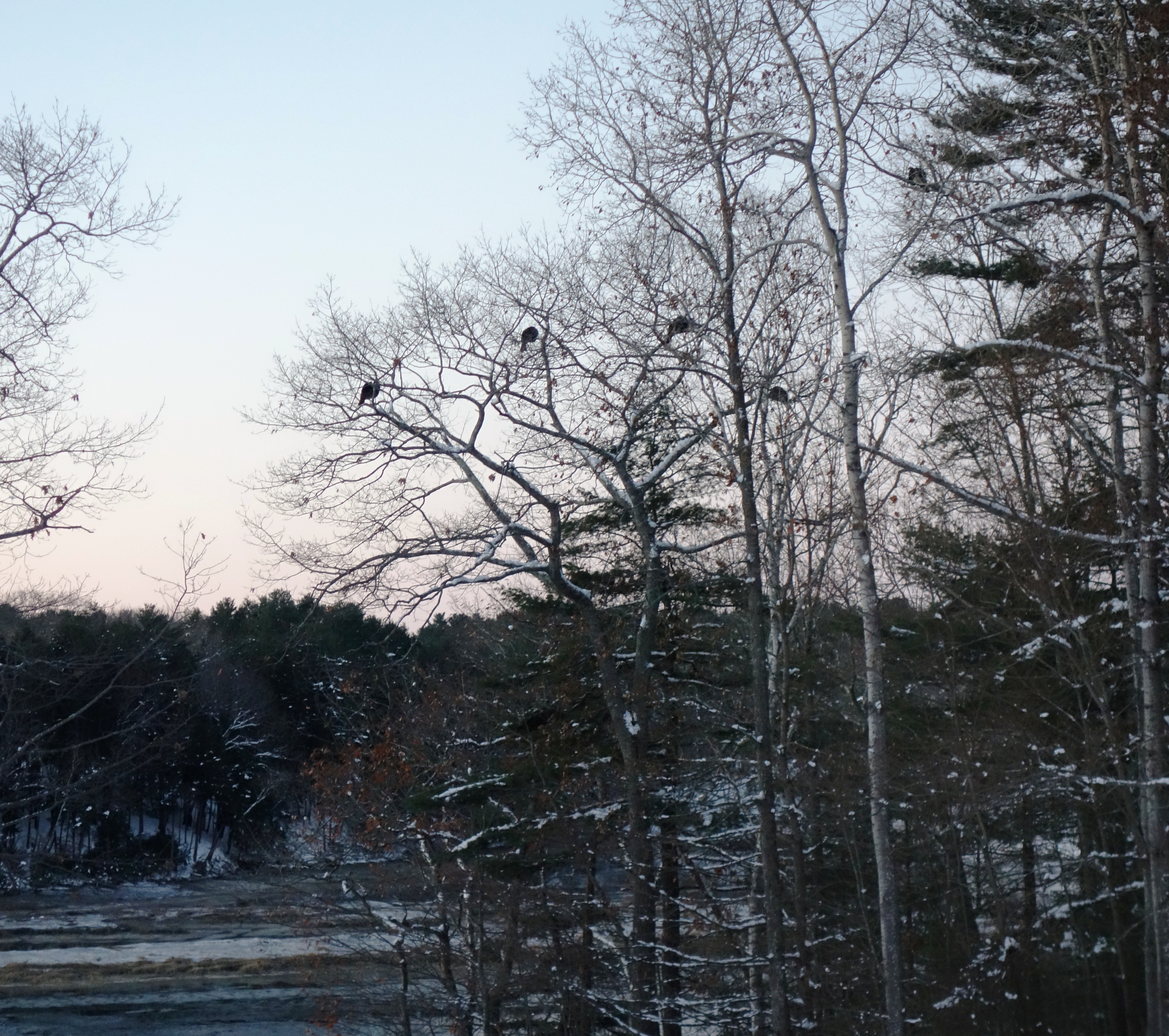 I’ve been doing some reorganizing of my fly tying material. Here is a photo of my new system for hook filing. I bought 100 10ml 4×4″ poly bags on e-bay for $10. These are really great. I write the size of the hook in the left hand corner and then what kind of hook it is. I then made index tabs out of some 5″ lined cards – not pictured. So far I like it a lot.
I’ve been doing some reorganizing of my fly tying material. Here is a photo of my new system for hook filing. I bought 100 10ml 4×4″ poly bags on e-bay for $10. These are really great. I write the size of the hook in the left hand corner and then what kind of hook it is. I then made index tabs out of some 5″ lined cards – not pictured. So far I like it a lot. 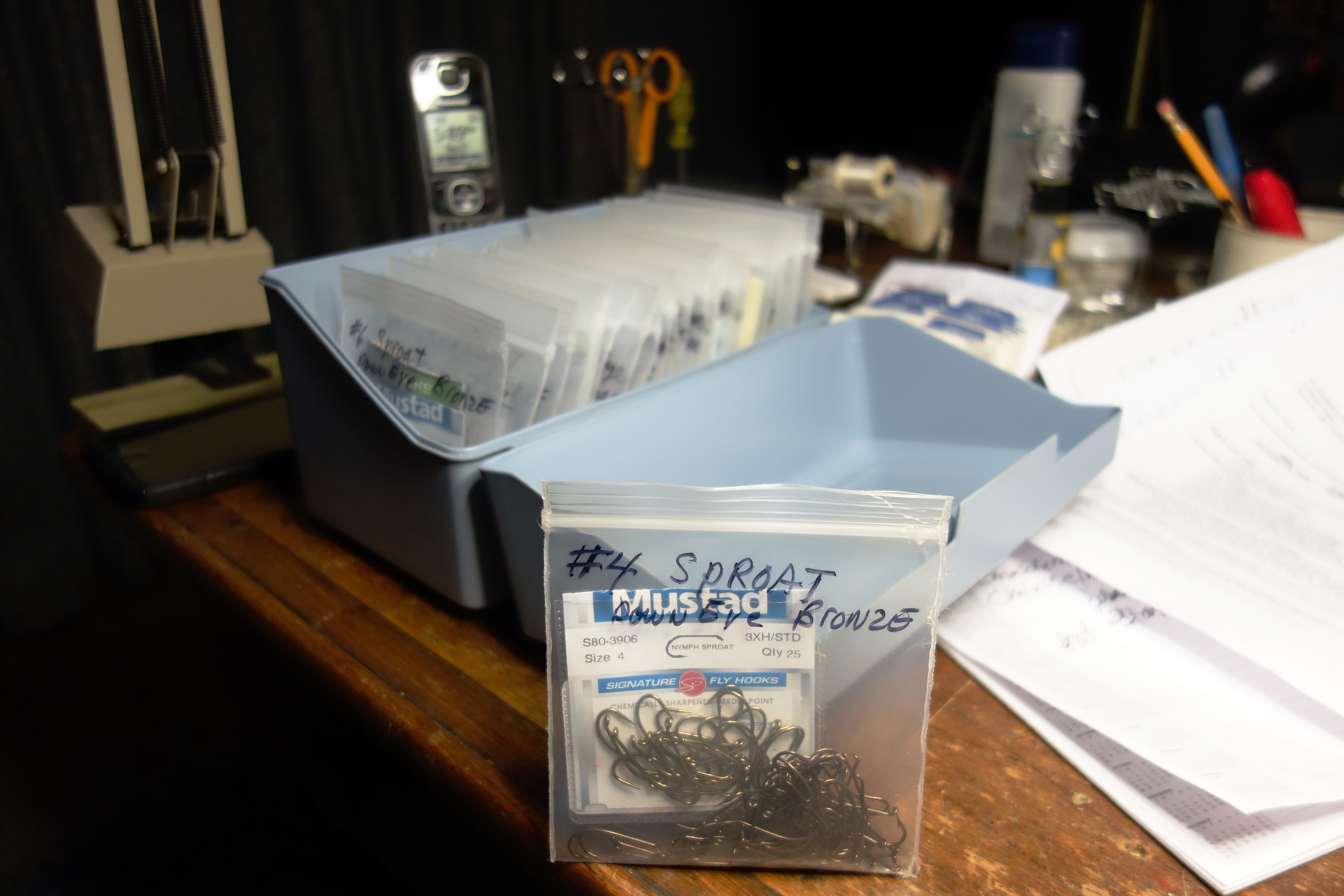
I did finally start some tying just yesterday, 11/25, and here are a few October Killers I tied to replenish my inventory. 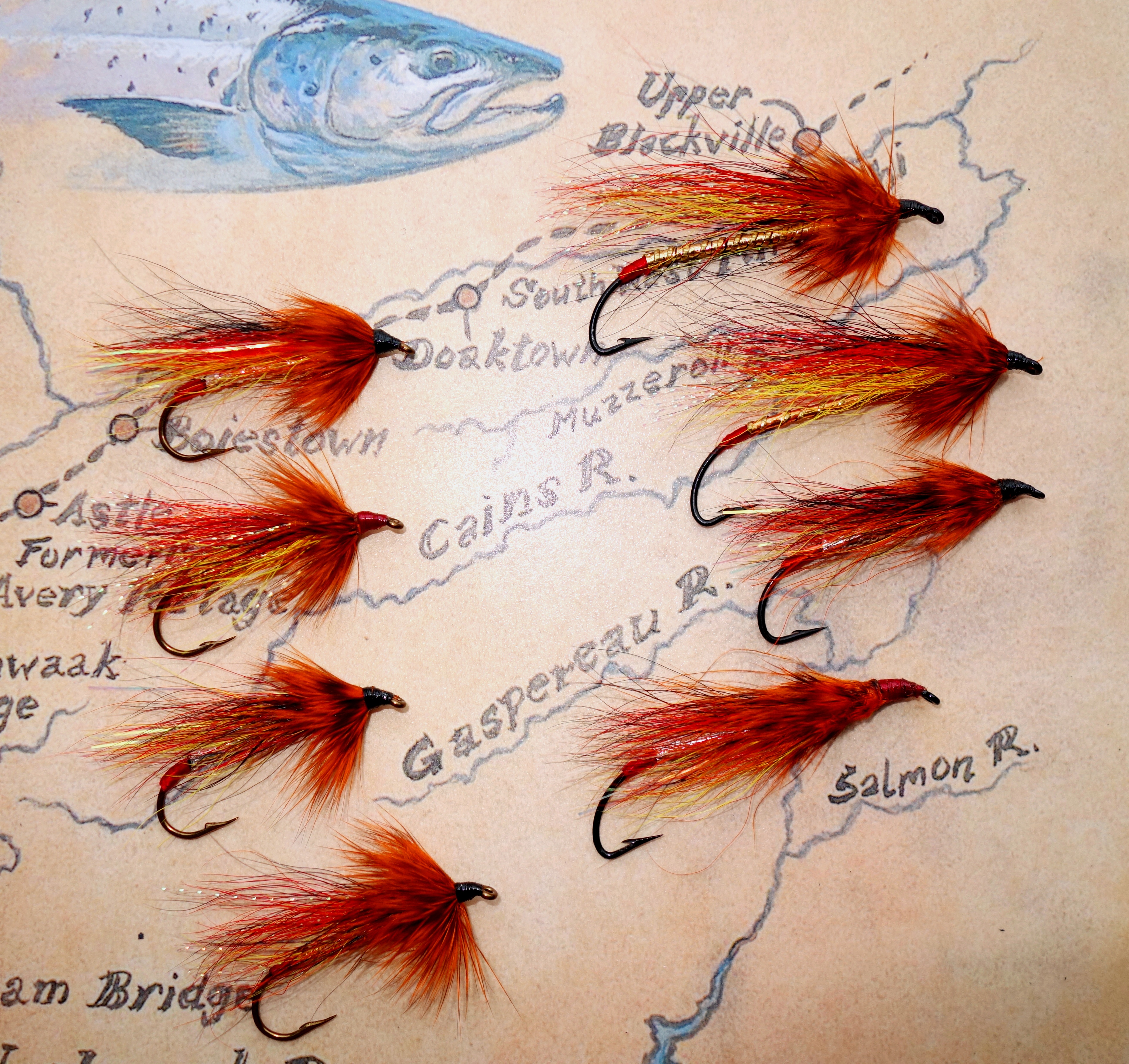
Next is a post about recovering the stern of a 26′ Sharpe jet powered canoe with Kevlar. Because this canoe will run in relatively shallow water without fear of hitting the lower unit, we use it to run up and down the Miramichi and the Cains in lower water conditions, sometimes too low… In the 10 years that we have been running this boat we have scuffed over enough boulders and gravel bars to actually wear through the fiberglass covering in a couple of small places. I brought the canoe home this fall, flipped it over and prepared the bottom for re-glassing by sanding the area down to bare fiberglass.
Kevlar is an extremely tough fabric that is used to make among other things bullet proof vests. It is used in boats, but the stiff, tough, makeup of the material makes it much more difficult to apply than fiberglass. A 3 yard x 50″ piece cost $200.!!!!
Our troubles began with cutting the materials in two for the two layers we planned to apply to the hull. I had a small pair of scissors made for cutting spectra fishing line. They did cut the Kevlar, but not well or easily.
The second mistake was trying to lay up both layers at one time. We should have applied one layer and let it dry before applying the second. The material is so dense that it is hard to wet it all the way through. In the end I feel that we succeeded, but it was nip and tuck when in about two hours the epoxy started to lose its pot life and thicken up on us. We kept at it until the end with the bubble-busting laminating rollers, squeeges, and brushes, and hopefully it will be good. It looks pretty good, but check out the work for yourself below.
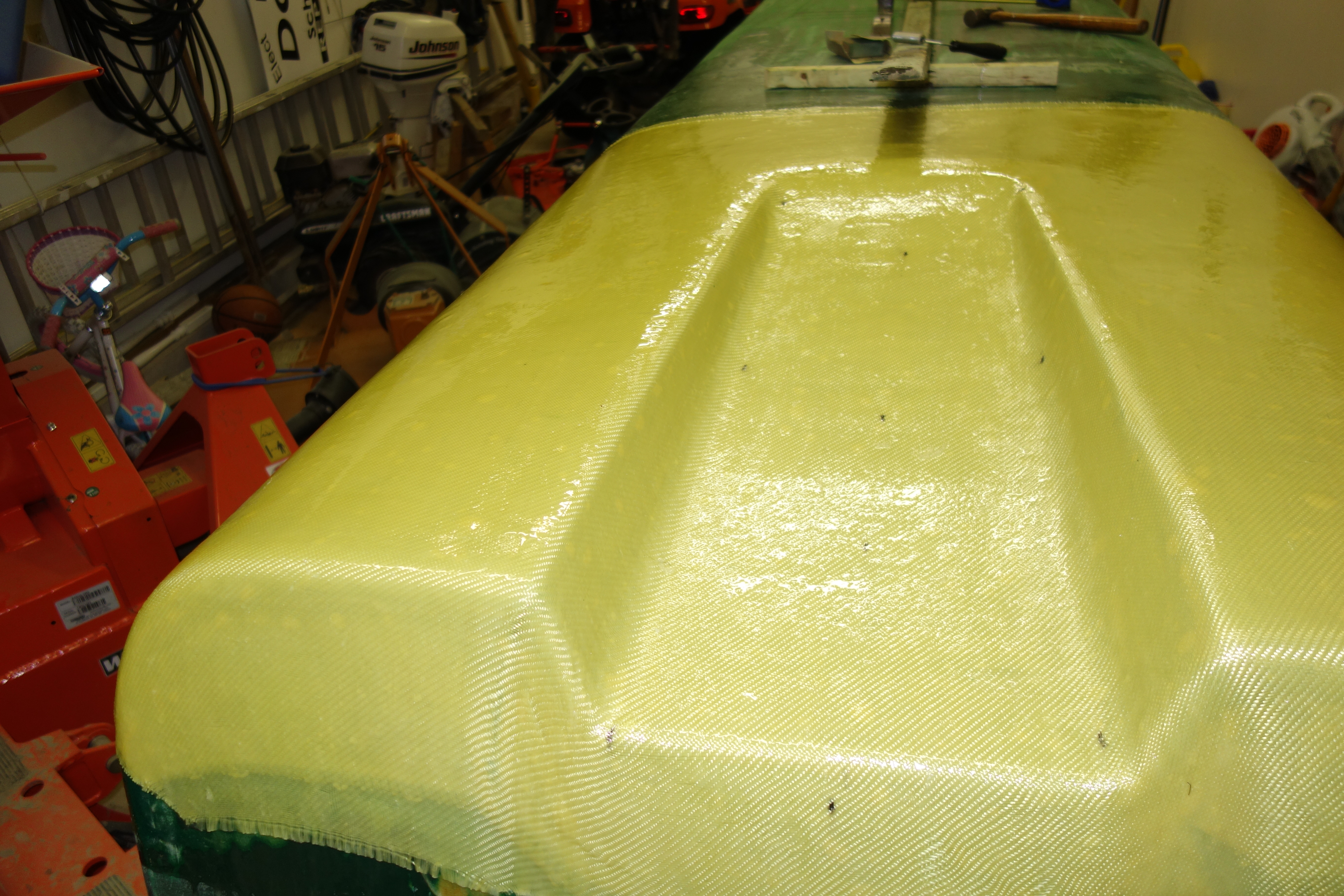
The finished product. Note that this is the jet tunnel. Water travels along the bottom and then up this tunnel as the boat runs forward. The intake snout of the jet turbine that replaces the standard outboard lower unit gets its water from this tunnel thus can be positioned higher than the bottom of the boat on both sides thus protecting itself from contact with the bottom. Forming the double layer of Kevlar to the tunnels angles was difficult.
Celebrity Cast is a new mystery, suspense, thriller with a fishing twist written by fellow salmon angler Harry Groome. I told Harry that I seldom read books like this, mostly because my energy for reading is taken up with reading historical books about fishing. Harry sent me the book, though, and I did read it and enjoyed it. First, it was written against the backdrop of an Atlantic salmon trip to Russia, so that would have helped, no matter what. Second, it was written in a pleasant, easy-to-read style that I enjoyed. Third, it didn’t drag on as some of these things do into 600 pages of endless and meaningless details. Fourth, while it had the required recipe of sex, perverted financial ambition, politics, and violence, it was all in measured levels that weren’t offensive to me anyway. Last, the story line was lively and moved along nicely. I read it in a few evenings which is not the way I usually do things since all of my pleasure reading is in the last 0 to 15 minutes before I clonk out for the night. If you can’t use it yourself it would make a good present for most salmon fishing males.



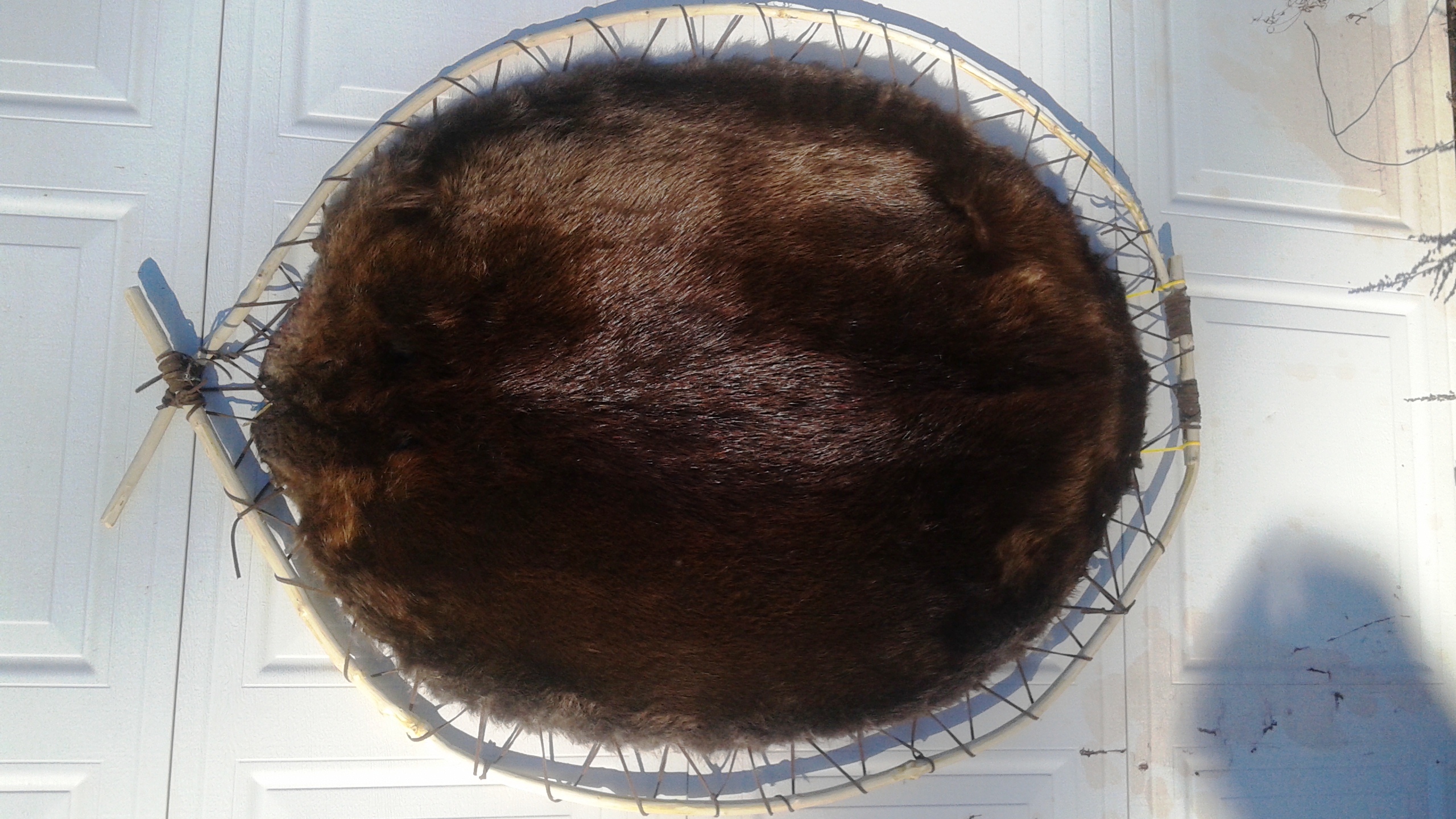




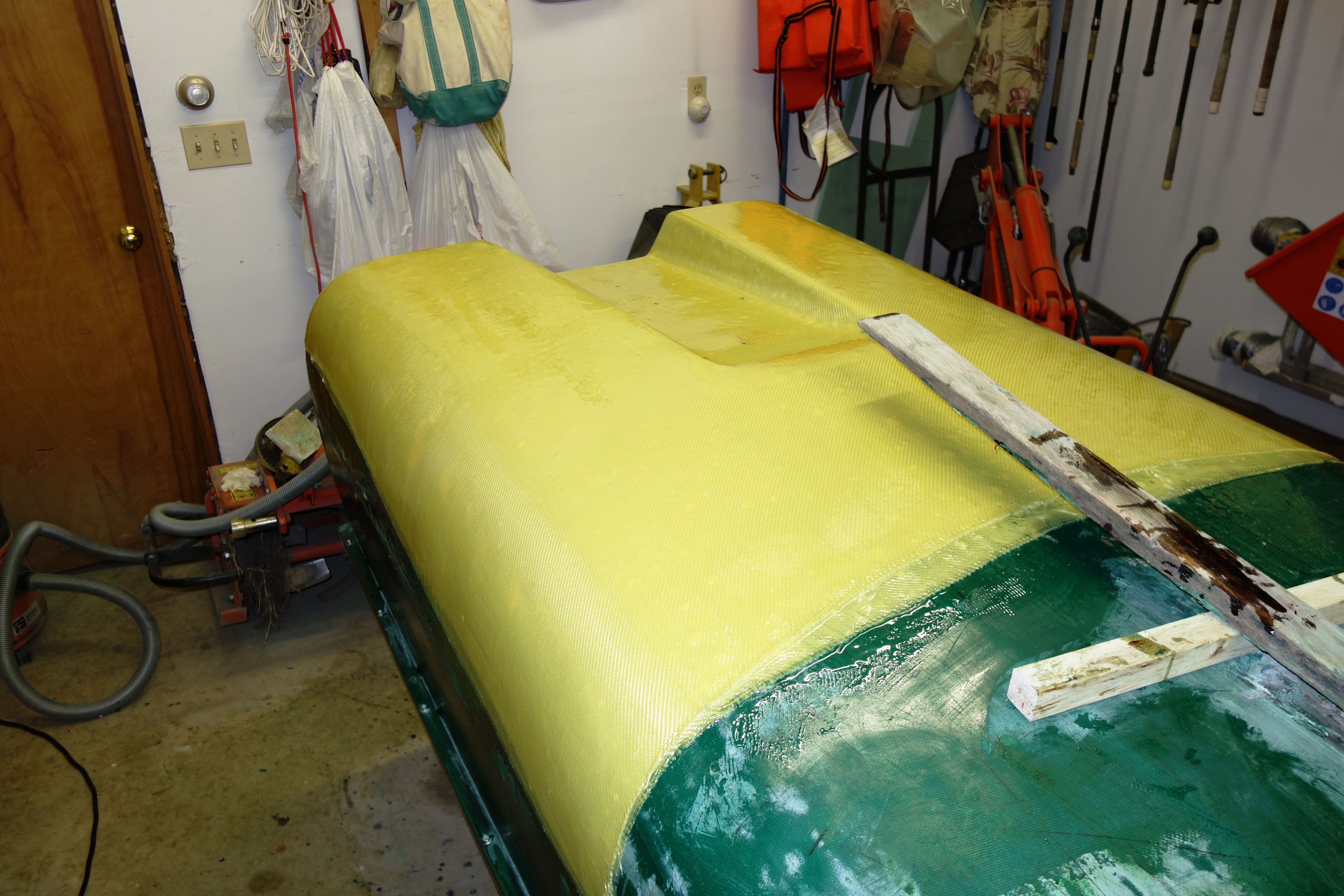
Hello Brad and follower ship,
I’m writing this from downtown Geneva-Switzerland on a grey December day, wanting to share with all of you a lovely occurence, late October at my Bartholomew Camp. Two days after arriving there, a friend of mine and I were privileged to watch from the veranda of my camp how the salmon gingerly moved in to the pool down below and during a 24-hr period went steadily about theuir spawniung business. It made my heart jump! As a fact, there’s always salmon fry in the Bartholomew in June – now I see why that is so. Just when I thought that … well, I don’t have to catch (and release) one single salmo – as long as they come back. This would confirm what many say: The fish come in with the right water levels, go about their spawning business and high-tail it outta there. John Stucki, Bartholomew River (and GVA-Switzerland)
Great comment John, thank you. Just as they do in other Miramichi spawning tributaries I would think that after spawning that most of the salmon do leave the Bartholomew and find a deeper place in the system to spend the winter before going back to sea. In addition to salmon fry do you also regularly see adult salmon jumping in the river?
I was there in late June until the beginning of July. Where I usually see fish, there were none, due to historically low water levels and consequently warm water temps.
Halas, I wasn’t there before the season closed in mid-October, thus I’m not the best to gauge or judge.
Keeping my fingers crossed that in 2019 I won’t have to venture North to the Matapedia, where water levels at the end of June ’18 were … too high (!)
Over the years, the fishing in the Bartholomew has been spotty at best. I’m just happy when I see some spawning activities going on in fall. And in spring, when the great bald head eagle moves upriver, I’m not long to brake out my looking glasses to watch for salmon activity.
Tight lines to all <°))))<<
Hello Brad.
Think I sent you some pictures on Cains River some time ago.
One was the Alec Arbeau interval with the lower pool in the background.
Was going to copy the origional and then overlooked doing that.
Are you still interested in these pictures or do you have enough already.
Cains River is indeed a special place on this planet.
Spent many days there and hope to get back there again.
Sailed the river on many occasions with the old time guides.
Al Gallagher. Millis Ma.
Al – you did send me some pictures. One was of your brother holding a couple of grilse he had just caught in the Arbeau Pool. That picture will appear in the book. There is still a chance for revisions, though, and I am building a small list of things that I may change after the first go around, so if you have something of interest please e-mail it to me for a look. Thanks again. I just wish that I too could have fished that river years ago when the run in the Miramichi was so much larger than it is today. According to biologist Bill Hooper the magic year was 1967, the last really big run.
Brad —–Once again your blog was very interesting, I enjoyed the pictures of the beaver pelt. Darrel is a very tallented individual. Have Darrel tan a few beaver pelts and make some Cains River beaver hats. Hopefully the salmon survive another cold New Brunswick winter and we all get to chase then again in 2019.
Kal Kotkas , Shelton WA
Thanks Kal. Happy New Year.
Hi Brad,
Loved the aerial photo of the Black Brook Salmon Club water. I am not a member, but have fished there as a guest for almost 45 years. longer than most living members. So it brought a tear to my eye to be able to look down on pools that have given me so much pleasure over the years. Just wish the photographer could have included the camp buildings in the picture. Maybe next time.
Thanks for the memories, Ben
Brad:
Great shot of my old spot at the confluence of the Cains and Miramichi. Boy has it changed since the late 70’s. Those were the days my friend!!! Hope you have a successful annual dinner. Wish I could be there. Look forward to seeing you next Sept. Rick Seder, Worcester, MA.
Rick – enjoy the warmth, we will miss you at the dinner. Your fly tying material donation will certainly be a hit. Brad
Brad,
That was a good read, thanks. I too liked the aerial photo of the Black Brook Salmon Club. Wow.
I don’t know if your followers can pick up a Trout and Salmon magazine (UK) but I have a piece in the January 2019 issue which describes a short Scottish trip last October that was my ‘Into the Wild – without the bear and with a bit more change in my pocket’. A bit of freewheeling writing that I enjoyed producing anyway so hope you like it and there’s notice of my book ‘How to Catch More Salmon’ there too (White Owl Books, Barnsley, UK). It’s published in April.
Hope the Boston MSA dinner is a huge success.
Best Henry
Hi Brad, two of my friends, Hans Stucki and Doug Jowett, both suggested you might be able to share with me info about striper fishing in the Mirimichi. Although I used to fish it for salmon quite a few years ago we never encountered any Stripers. I’ve been told that the river has a very healthy population of Stripers nowadays and I’m interested in “ when, where and how”. I’ve only fished the river in the vicinity of Blackville. When is the best time for striper Fishing? Is the fishing from shore or a boat? Will I need ( be required to have)a guide? What is the preferred type of fishing? Can you recommend any patterns that have produced well? Will I need a license?
Anything else you’d be willing to share about the fishery would be appreciated. I live in Harpswell and love flyfishing for Stripers but have found the fishery inconsistent and would be willing to travel for a better opportunity.
Thanks and tight lines, Dave S
Dave – striped bass have spawned in the Miramichi River – primarily the NW branch – since long before European colonization. There has been plenty written about stripers all through the known history of the river. The population, though, has been up and down over the years, and it is unknown to what extent that is because of fishing pressure or natural fluctuations.
The best fishing for striped bass in the M typically occurs in the tidal zone. Much as they do in the Chesapeake the bass enter the fresh water habitat to spawn and to winter over. Spawning takes place in the lowest fresh water reaches around the third week in May. After spawning a large portion of the adult population leaves the river and migrates both north and south along the coast to feed for the summer. In early October the fish start returning to the estuary and lower reaches of the river to spend the winter. Stripers must winter over in fresh water because it will freeze before getting cold enough to kill them.
The population has been very high for the last 8 or 10 years because of the highly protective regulations that were in place. Because of this some stripers are now living further up in the river system during the summer – much to the alarm of salmon enthusiasts. Most of the salmon pools now catch a few striped bass during the summer, but generally not enough to make a real fishery. In May, though, before the adult salmon arrive striped bass have been present in fishable numbers up as far as Blackville. I saw a whole school on the surface during Memorial Day three years ago at Black Brook, and last year in mid June we had a sizeable resident school in the deeper water below Doctor’s Island.
Stripers can be caught from the shore at many places all through the lower Miramichi in late May and early June, and the further down river you go the better your chances. The best fishing by far, though, is down in the estuary in brackish, tidal water. Several of the salmon camps now offer striped bass fishing in season. Keith Wilson at Wilsons, Byron Coughlin at Country Haven, and Debbie Norton at Upper Oxbow Outfitters would all be good folks to talk with.
Let me know if you have any other questions. Thanks Brad